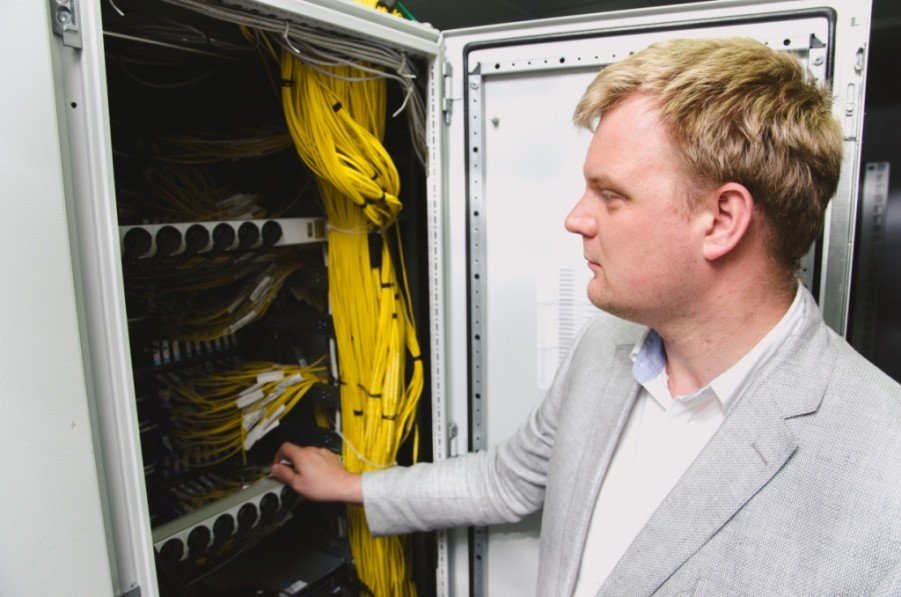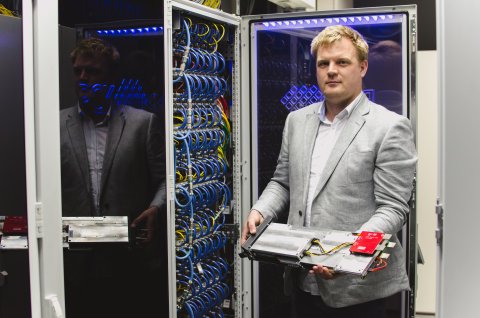Our world is standing on the bring of the fourth industrial revolution, when technology will connect the virtual world to the physical. Today, the role of smart machines is already so great that it is difficult to imagine peoples’ daily lives, manufacturing, or government without them. But in the near future, robots will not only be able to complete algorithms without thought, but also analyze data and independently determine a strategy.
Let’s remind ourselves what the first three industrial revolutions were. The first was the creation of steam engines at the end of the 17th century, which was an impulse for the development of mechanical engineering, transport, and industry. The second occurred at the end of the 19th century, when mass production was mastered, and Henry Ford released sequential manufacturing of automobiles, which became possible because of the wide distribution of electricity. The digital revolution at the end of the 20th century, when computers were invented, completing calculations millions of time faster than man, is considered the third industrial revolution.
The concept of automated factories and digital manufacturing are considered the harbingers of the fourth industrial revolution. Kirill Borodulin, director of the SUSU Supercomputing Center, senior professor of the Department of System Programming, is developing cloud platforms for solving digital manufacturing tasks.
“Until recently, the barrier for this revolution was limitations of sensors. Earlier in businesses they had expensive sensors which didn’t have the necessary accuracy. Now with the development of the internet of things, sensors have become inexpensive and are placed everywhere possible (for example, in kettles, doors, and outlets). In manufacturing, with the development of the wireless sensor family, it became possible to collect a very large amount of data from stands and manufacturing equipment and analyze them. But since there is a lot of data, a single server cannot process it in a short period of time. However, we need very fast processing, since industrial processes, all together, are very fast-flowing and we need to enable the possibility of analysis close to real time – so we use cloud technologies,” explains Kirill Borodulin.
Cloud technologies are one of the modern trends in which all calculations are transferred to the “cloud”, since it enables great flexibility of resources and calculation and enables the use of these resources as needed. A project by SUSU researchers, “Cloud Industrial Platform,” is studying the possibilities of creating a system of “digital twins” for manufacturing processes. A digital twin is a virtual version of equipment or of a technological cycle in the form of computerized physical and mathematical models. In real time, digital twins synchronize with the industrial processes using analysis of data received from the wireless smart sensors.
“Gathering digital twins from various equipment and technological processes, we can create a digital twin of the business as a whole. This makes it possible for us to analyze the current situation. That is, the engineer, sitting at his computer, can receive information about any portion of the production chain at the current time. Second, this offers a prognosis about how the system is behaving itself. For example, the digital twin makes it possible to determine some equipment going out of service according to analysis of the data received from sensors,” says the director of the SUSU Supercomputing Center.
The concept of the SUSU scientific collective is not limited to one business. As a result they plan on creating a cloud platform which will bring together manufacturing equipment, industry, and centers of knowledge (for example, universities) into one united space for all Russian businesses.
“Within the industrial cloud platform, manufacturers of equipment offer digital twins: a set of mathematical models superimposed on to data sources from sensors installed on the supplied equipment. The factory uses data from the digital twins to analyze processes of manufacturing. Knowledge centers offer algorithms – the mathematical models needed to complete tasks,” explains Kirill Vladimirovich.

South Ural State University already has a lot of experience in creating digital twins. This work is led by Gleb Radchenko, director of the SUSU School of Electrical Engineering and Computer Science. The Laboratory of Problem-Oriented Cloud Environments, led by professor Andrey Chernykh, director of the Laboratory of Parallel Calculation of the Ensenada Center of Scientific Research and Higher Education (Mexico), was created to solve the set tasks.
The work of the laboratory which is aimed towards solving these tasks is tied to supercomputer calculation. A supercomputer is a very strong, high-output computation system which contains a full range of unique, world-class developments, which exceeds the majority of existing supercomputers around the world by its technical parameters and speed of calculation. Around the world, there are no more than 1000 of such systems. There are three supercomputers installed at the SUSU Laboratory of Supercomputer Modeling, the work capacity of which is on the level of the leading international computational systems.
“In the academic environment, the topic of digital twins is beginning to very strongly develop. The number of articles in Scopus has significantly grown over the last three years,” says Kirill Borodulin, “In addition, right now the developments of companies interested in this are appearing. For example, in 2017 the GE corporation its cloud platform Predix, which uses the concept of digital twins – but it is not yet available in Russia. Also, the Emerson company, with whom our university partners, holds educational seminars, including for staff of our university, in this area. I think that in 2018 there will be a huge number of articles, projects, and completed commercial solutions for implementation. So it’s important that we complete our project to make it into this wave.”
SUSU researchers are working alongside industrial corporations in the Chelyabinsk region and Russia, thanks to whom the developed models are not far off from reality. Now work is being done on important projects with large manufacturers – Emerson, KAMAZ, MMK, and more. Work on this area which is so important for science and manufacturing allowed Kirill Borodulin to become one of the winners of the contest Support for Young Science last year, held at SUSU as part of the 5-100 Project.




